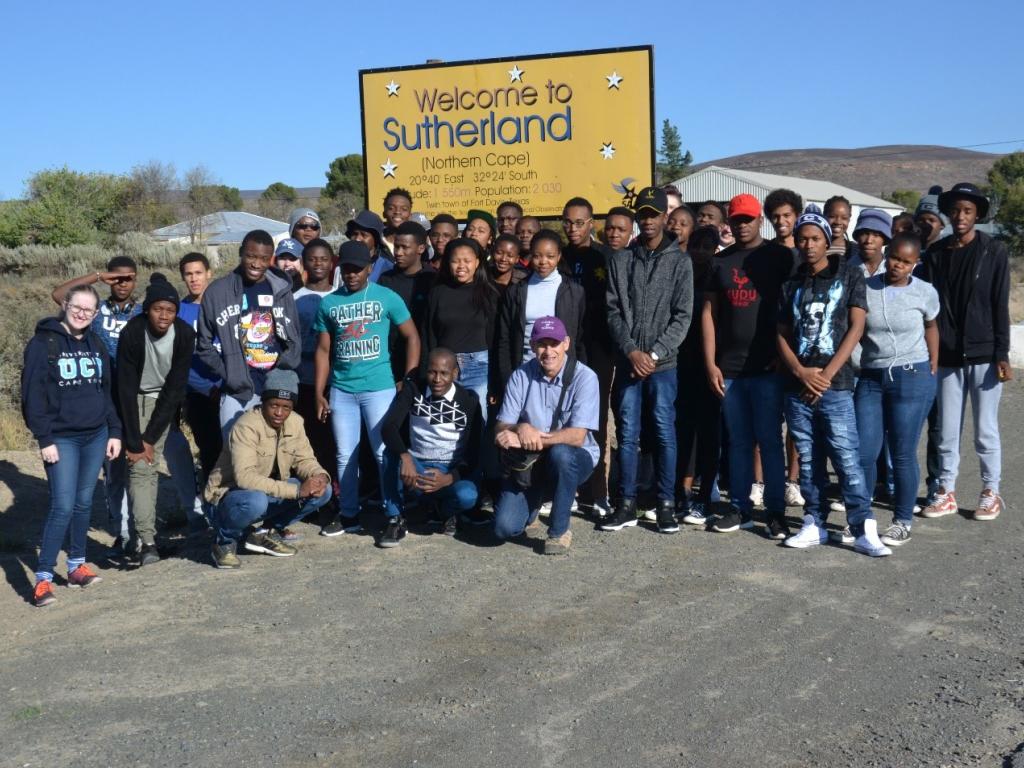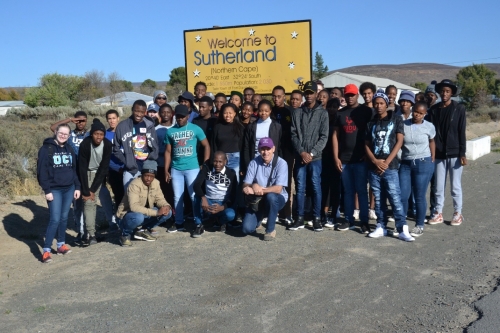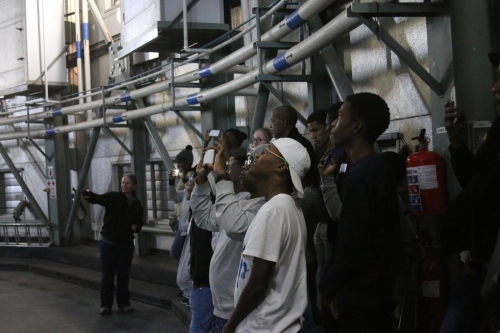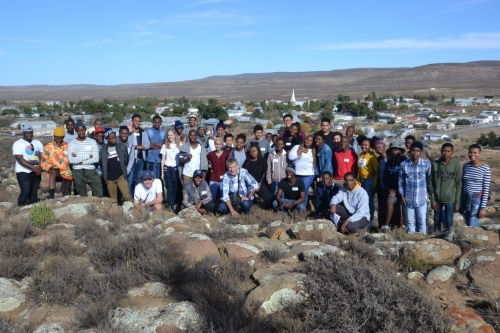Science Odyssey in Sutherland


One definition of the noun “odyssey” (od·ys·sey \Ëä-dÉ-sÄ\) is that it is (1) a long wandering or voyage usually marked by many changes of fortune, (2) an intellectual or spiritual wandering or quest. The word derives, of course, from Homer’s Odyssey, the story of the 10-year return voyage of Odysseus from the Trojan war. So, a Science Odyssey must be an epic journey involving the traversing of both a literal and a scientific landscape, involving an exploration of Science itself and our place in science, and incorporating some wanderings of a metaphysical or spiritual kind. (Watch out for the movie ...)
Such were the grand intentions of our 2017 Science Odyssey, suitably scaled to the realities of limited time and resources, and taking place in the short vacation from 1-5 May, 2017. The background to this initiative is that many students embarking on a Science degree have a limited perspective of what Science is, how scientists think, and what kind of work scientists do. Typical home and community environments in South Africa provide scant help, and the odds are stacked against schools and long-suffering science teachers providing this sort of guidance, despite their best intentions. In addition, the nature of science and the roles and responsibilities of scientists are increasingly in the spotlight, and science students need to think through what they and science in general can offer to current debates, and to improving the lives of ordinary South Africans.
Against this background we have tried over the past 5 years to provide an opportunity for first year Science students at UCT to experience cutting edge science and to think about their potential role as scientists. This year we took two groups of about 45 students on three-day excursions to Sutherland in the Northern Cape, home to national and international astronomical facilities like the Southern African Large Telescope (SALT). It is important to note that these were not just students majoring in Astronomy, but students representing most of the majors offered in the Science Faculty – precisely because we wanted to focus not only on the specifics of the science being done in Sutherland, but also to think through broader aspects of the scientific enterprise.
We took over the Sutherland Hotel, and in some senses also the small town of Sutherland, for a whole week in early May and the students participated in a busy programme. The highlights of this were probably the comprehensive tour of SALT itself, as well as the visitor’s centre at SAAO, under the expert assistance of SAAO scientist and UCT alumnus Dr Lisa Crause, and viewing of the night sky: for most students it was their first view of celestial bodies through a telescope, and the highlight for some was seeing Jupiter and its moons, Saturn with its rings, and our own moon with its craters!

But there was much more to the programme than that, with perhaps three aspects standing out in terms of overall impact. The first was a series of discussions in which students explored their own journey into Science, their experience so far in the Science Faculty, and their own world-views and assumptions about life and each other: it was evident that we have a generation of bright, critical young scientists who are embracing the possibilities and challenges of science with enthusiasm, and are open to hearing the views and experiences of others together with revising and expanding their own views. One student remarked that the whole experience had “raised my self-esteem and my attitude towards studying science”.
The second feature of the programme which proved significant was the discussion around how to improve learning in the Sciences: students had an opportunity to review their progress so far, and to re-evaluate their learning strategies – or to consider the extent to which approaches from their high school experience needed to be revised. One student remarked that “it was good being able to speak out about my difficulties in a course – to someone who understands us – and getting motivated to do well.”
The third notable feature of the programme was the “project” which the students embarked on to assess the impact of the scientific enterprise on the town of Sutherland itself. This started with a walk up to the ridge overlooking the town, where we pondered the overall aspect of the town, and considered the stark socio-historical outlines of a small karroo town. This was followed by the students breaking into small groups and dispersing to investigate the experience of the residents: some went to the clinic, others to the high school, and others to visit local businesses, the community centre, a bed and breakfast establishment, the central kerk in the town and so on. When the students regrouped after gaining insights into slices of life in this town, they shared a surprisingly complex picture of life in Sutherland and the extent to which it benefitted or otherwise from the scientific activities. While it led one student to wonder whether “all those telescopes are a huge waste of money”, most others reached conclusions like “it forced me to think about how my skills and qualifications will contribute to society at large”.
The 2017 Science Odyssey has confirmed that we have outstanding science facilities and science in South Africa which should be an inspiration to the emerging generation of scientists, and that there is huge value in opportunities like this for students to step back from the details of their studies to think about the bigger picture.
This event was made possible through a DHET Teaching and Learning Development Grant, and its success was due in no small measure to the participation, as mentors, of senior science students Kelcey Maiwashe, Tariro Chatiza, Kim Midzi, Ruth Amoore and Sandile Sithole, as well as Dr Dale Taylor from CHED and the Department of Physics, and Dr Lisa Crause from SAAO.
